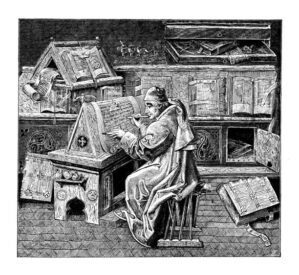The following is the first in a series of history lessons through the lens of leadership by Dr. Gregory Shea, Adjunct Professor of Management, the Wharton School and Senior Fellow, Center for Leadership and Change Management.
Why mine history for lessons in leadership?
First, Confucius recommends that we “study the past if you would define the future.” Lessons abound in past lives, to be sure, and no more than in those who led. As Retired Admiral Stavridis (and former NATO Supreme Commander) notes in his book The Leader’s Bookshelf, leaders across time, profession, level and setting face “creating effective strategies, inspiring subordinates, distributing scarce resources, communicating effectively, building collaborative teams, and developing innovative solutions to seemingly intractable problems” (p. 16). Mark Twain would, likely sardonically, agree as in this quote often attributed to him, “History never repeats itself, but it does often rhyme.” Hence, anyone ignoring history ignores the lessons, often hard won, of millions of leaders. Time does not begin with us. However, the future does.
define the future.” Lessons abound in past lives, to be sure, and no more than in those who led. As Retired Admiral Stavridis (and former NATO Supreme Commander) notes in his book The Leader’s Bookshelf, leaders across time, profession, level and setting face “creating effective strategies, inspiring subordinates, distributing scarce resources, communicating effectively, building collaborative teams, and developing innovative solutions to seemingly intractable problems” (p. 16). Mark Twain would, likely sardonically, agree as in this quote often attributed to him, “History never repeats itself, but it does often rhyme.” Hence, anyone ignoring history ignores the lessons, often hard won, of millions of leaders. Time does not begin with us. However, the future does.
Look back to look forward.
 Second, failure to look back not only deprives us of an opportunity to learn, it also increases the chance of repeating previous mistakes. As Spanish philosopher George Santayana famously wrote, “Those who cannot remember the past are condemned to repeat it.” The Life of Reason, 1905. For the most practical among us, consider the pragmatic words of Otto von Bismarck, “Fools learn from experience. I prefer to learn from the experience of others.” Or, I’d offer, life thrusts enough learnings on us, no need to increase the number unnecessarily by ignoring lessons of history.
Second, failure to look back not only deprives us of an opportunity to learn, it also increases the chance of repeating previous mistakes. As Spanish philosopher George Santayana famously wrote, “Those who cannot remember the past are condemned to repeat it.” The Life of Reason, 1905. For the most practical among us, consider the pragmatic words of Otto von Bismarck, “Fools learn from experience. I prefer to learn from the experience of others.” Or, I’d offer, life thrusts enough learnings on us, no need to increase the number unnecessarily by ignoring lessons of history.
Look to history to expedite your learning about your leadership and those whose leadership you would develop.
Third, learning from history often proves difficult. We aren’t very practiced at it or as Georg Hegel wrote “We learn from history that we do not learn from history.” The learning takes work and, just like an after action review, it can entail picking through triumph and tragedy, success and failure. Learning at its best is a pursuit of truth and the “Truth will set you free. But not until it’s finished with you.” (David Foster Wallace), meaning that your pursuit of truth may well lead you to the more personal, the more important for any leader, and to the condition identified by Gloria Steinem, “the truth will set you free, but first it will piss you off.”
You cannot and should not delegate your own learning about your own leadership — suck it up and pursue it.
The above notwithstanding, a danger exists in studying leadership as exercised across time that we fall prey to a version of the great man {sic} theory, namely study a great leader and do as he or she did. A more likely effective use of history’s lessons from leadership normalizes the often very personal struggles that leaders face, regardless of time period, gender, or race and the illustration of principles bearing on a given person trying to lead within a particular type of situation. The next Leadership Digest will offer the first of occasional pieces examining historical leadership moments, as Mike Useem would term them. We’ll cross time and geography. In the meantime, consider reading a good biography (we live in an age filled with them) about a leader who, for whatever reason, interests you.

Please send any nominations for specific leadership moments from history (along with your favorite reference regarding it) to sheag@wharton.upenn.edu


